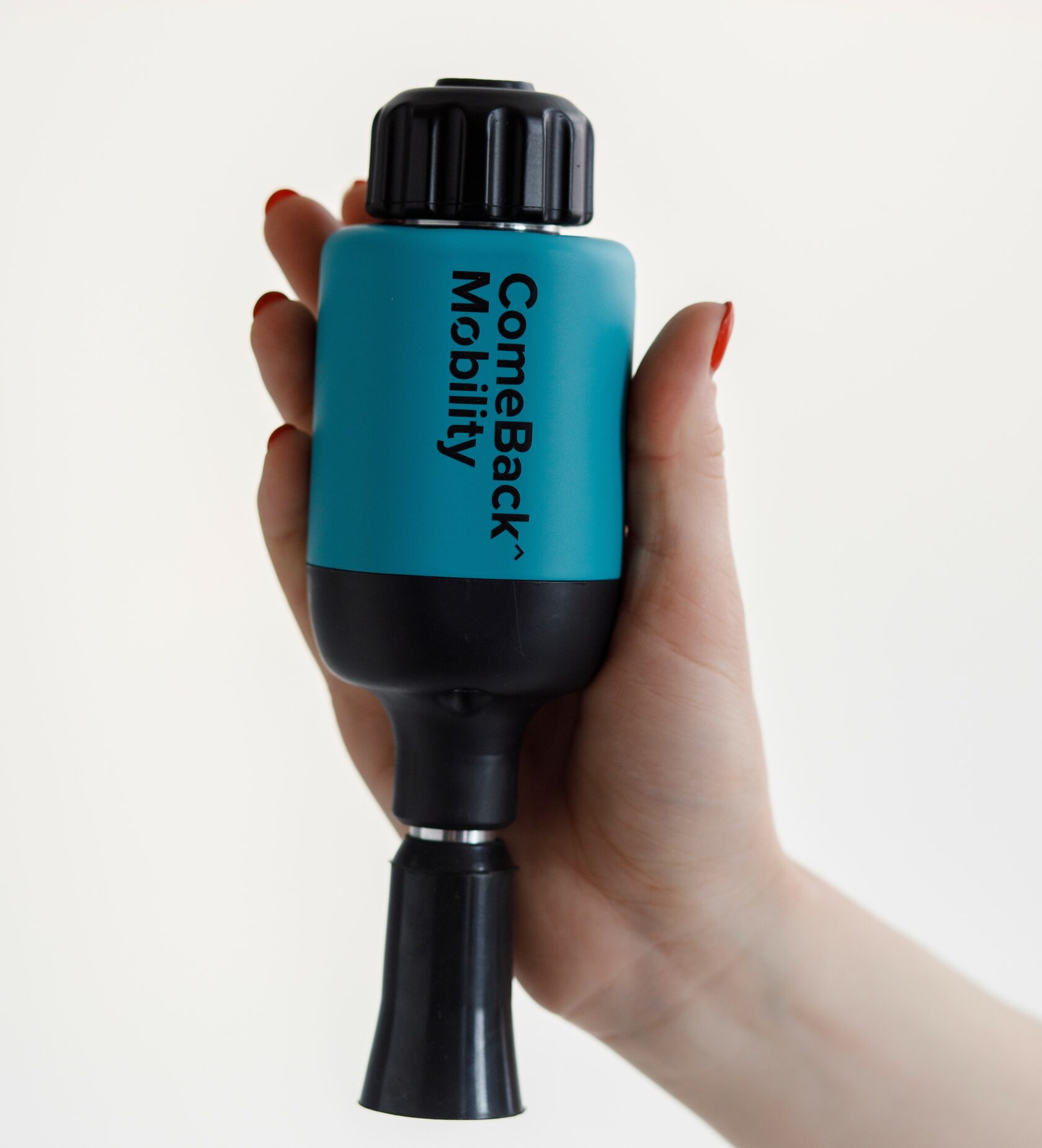Due to the rapid expansion of the digital industry and the growth of the nurse technology sector, telehealth and telemedicine for physical therapy are utilized far more frequently now than in former years. Furthermore, the Covid -19 pandemic has created a huge demand for implementing telehealth physical therapy in order to keep patients safe and healthy. This article highlights the pros of telemedicine for physical therapy and discusses the algorithms and procedures of remote patient monitoring.
What is Telehealth and Telemedicine in Physical Therapy?





To begin with, it is necessary to accentuate the difference between the terms ‘telehealth’ and ‘telemedicine’.
The Health Resources Services Administration defines telehealth as the use of electronic information and telecommunication technologies to support long distance clinical healthcare, patient and professional healthcare provider related education, public health, and health administration.
Telehealth includes remote nonclinical and clinical services. Telemedicine includes remote clinical services and interactive health communications between clinicians. Simply put, all telemedicine is telehealth, but not likewise. [5]
Delivery Methods





Telehealth physical therapy can be delivered through such approaches as video conferencing, remote patient monitoring (RPM), store and forward, and mobile health (mHealth).[5] Using store and forward in telehealth physical therapy assumes taking a picture of the healthcare issue and sending it to a healthcare provider to receive evidence-based consulting [5].
This kind of telemedicine in physical therapy is not synchronized, or not immediately viewed in real time. In contrast, RPM can be either synchronized (real-time monitoring) or unsynchronized (data is sent per doctor’s request.[5] MHealth is an approach to make digital manipulations with health data (store, resend, process, etc.) using digital devices (smartphones, tablets, laptops).[5] As it is seen from the description of each approach, in many cases, effective delivery of telehealth physical therapy requires combining several methods.
Telemedicine in physical therapy includes delivering hybrid (in-person and remotely) healthcare services. Examples of telemedicine services are RPM during a follow-up period after a patient is discharged from the hospital, collecting vital signs remotely, consulting regarding post-op and/or chronic disease treatment via video conference, and so on [5].
Telehealth Physical Therapy Current Procedural Terminology Codes (CPT)
Telehealth physical therapy has become more affordable for a greater amount of people. This relates to the fact that telehealth physical therapy CPT codes were recently reviewed to expand the list of covered telemedicine services.[4] Specifically, the Centers for Medicare and Medicaid Services (CMS) for the US federal healthcare delivery programs has revised (added new services to the list) the codes 99091, 99453, 99454, 99457, and 99458.[4]
These telehealth physical therapy CPT codes ensure reimbursement to healthcare providers for “reviewing remotely collected RPM data and consulting patients regarding their RPM data”.[4] Today, healthcare providers can receive reimbursement for educating, training, and consulting patients how to do telehealth physical therapy using available means of remote medical assistance to the fullest.

Telehealth physical therapy has become more affordable for a greater amount of people. This relates to the fact that telehealth physical therapy CPT codes were recently reviewed to expand the list of covered telemedicine services.[4] Specifically, the Centers for Medicare and Medicaid Services (CMS) for the US federal healthcare delivery programs has revised (added new services to the list) the codes 99091, 99453, 99454, 99457, and 99458.[4]
These telehealth physical therapy CPT codes ensure reimbursement to healthcare providers for “reviewing remotely collected RPM data and consulting patients regarding their RPM data”.[4] Today, healthcare providers can receive reimbursement for educating, training, and consulting patients how to do telehealth physical therapy using available means of remote medical assistance to the fullest.

List of telehealth physical therapy services
-
Monitoring patient treatment adherence (exercising, walking regimes, etc.) by means of:
- Patient-provider texting
- Video conferences
-
Creating and leading educational discussion groups for orthopedic patients and their loved ones about diagnoses and rehabilitation plans
-
Referring patients to other healthcare providers
-
Creating pre-recorded educational videos in accordance with Home Exercise Plan (HEP).[3]
Benefits of telehealth physical therapy
Nowadays, telehealth physical therapy gains momentum. This tendency is predefined by numerous advantages associated with receiving telehealth physical therapy.[3, 1]
1) Improved accessibility to healthcare services.





Telehealth physical therapy is a complementary (and in a growing number of cases, alternative) means of receiving professional medical assistance. Using telemedicine in physical therapy is an advantageous alternative for in-person visits for those patients who live far from the clinic.[3, 1]
2) Cost efficiency and time-effectiveness.





Telehealth physical therapy saves drive time and waiting time in the clinic, as well as reduces financial expenditure (sick day leave, transportation costs, etc.).
3) Possibility to advance home safety.





If you have concerns regarding home safety, telehealth physical therapy is a nice opportunity to receive evidence-based consulting on how to increase your home safety
4) Safer environments.





Telehealth physical therapy services eliminate the risks of getting infected with contagious diseases including COVID-19 when coming to healthcare facilities.[3, 1]
5) Better treatment compliance.





Telemedicine physical therapy increases patient treatment adherence to rehab programs.[3, 1] Patients tend to follow home exercise programs developed by physicians/physical therapists more often if their treatment progression is monitored at home.
Telehealth physical therapy software





Telehealth physical therapy software presumes using the same digital devices as you use for daily communication and information retrieving (smartphones, tablets, laptops, computers).[3] Telemedicine physical therapy is often delivered using Zoom, Skype, and FaceTime.[3] Thus, to receive remote healthcare, you will need to ask your physician exactly which software you should install to be compatible with the clinic.
Some examples of telemedicine physical therapy platforms that one may come across are InSync and Vsee.[2, 6] For example, Vsee provides a possibility for the patient to manage their healthcare digital data using Cloud Clinic storage.[6] This approach is convenient because patients can refer to their healthcare data anytime and anywhere, no longer needing to find hard copies of their medical records. Vsee telemedicine physical platform provides solutions for NASA, Walmart Clinics, Trinity Hospitals, and other giants.[6]
To find a telehealth physical therapy provider, you need to contact your health insurance company.[3] Then, call the proposed clinics to verify whether they deliver telehealth physical therapy services. If they do, talk to the telehealth physical therapy provider to learn more about the terms, procedures, solutions, and software required for receive remote care.
ComeBack Mobility solutions for telehealth PT
ComeBack Mobility telehealth PT solution is a real-time remote patient monitoring based on using a portable device (smart crutch tips) along with smartphone software (mobile app). This means of telemedicine physical therapy is elaborated for orthopedic patients recovering after an injury/surgery deploying a staged weight-bearing rehab program.
To learn in detail about the telehealth physical therapy services provided, read more about ComeBack Mobility Smart Crutch Tips.

ComeBack Mobility telehealth PT solution is a real-time remote patient monitoring based on using a portable device (smart crutch tips) along with smartphone software (mobile app). This means of telemedicine physical therapy is elaborated for orthopedic patients recovering after an injury/surgery deploying a staged weight-bearing rehab program.
To learn in detail about the telehealth physical therapy services provided, read more about ComeBack Mobility Smart Crutch Tips.

SOURCES
- Patient compliance with touchdown weight bearing after microfracture treatment of talar osteochondral lesions
- Patient compliance with postoperative lower extremity touch-down weight-bearing orders at a level I academic trauma center
- (PDF) Weight Bearing Compliance after Foot and Ankle Surgery
- Factors Affecting Compliance With Weight-Bearing Restriction and the Amount of Weight-Bearing in the Elderly With Femur or Pelvic Fractures
- Application Of Calculating The Maximum Permissible Load On The Femur After Osteosynthesis
- Current advances in training orthopaedic patients to comply with PWB instructions
- Force Plates – Do you need one?
- Different in-shoe devices for partial weight bearing
- Effectiveness of a Simple Auditory Feedback Insole





